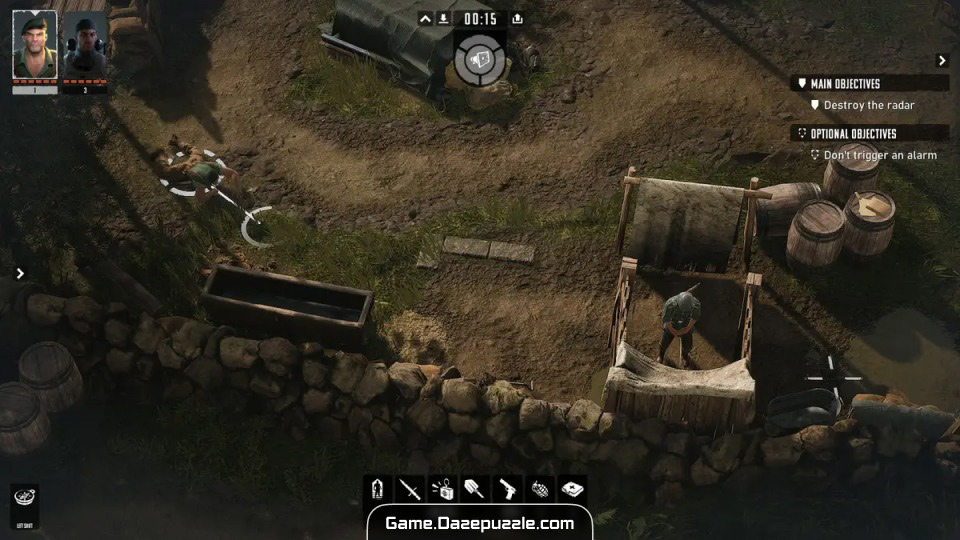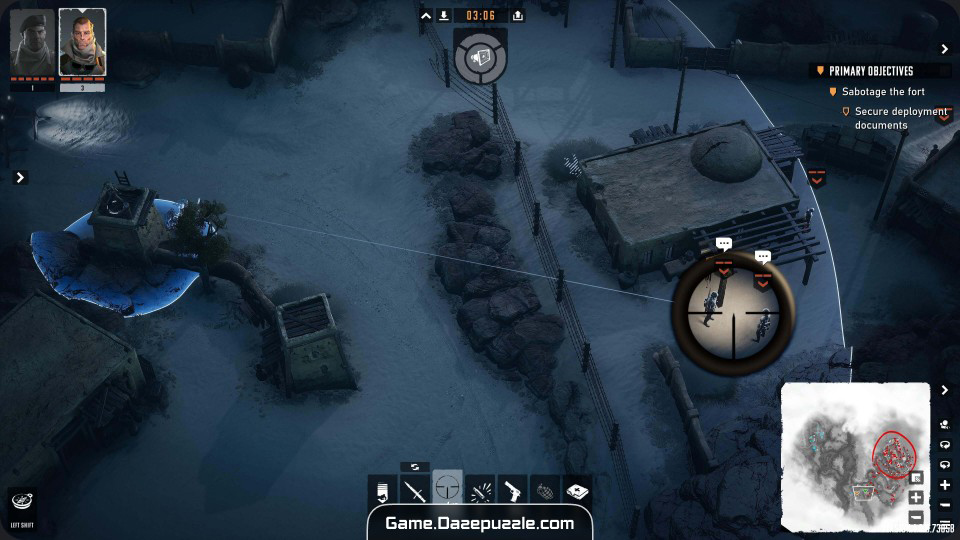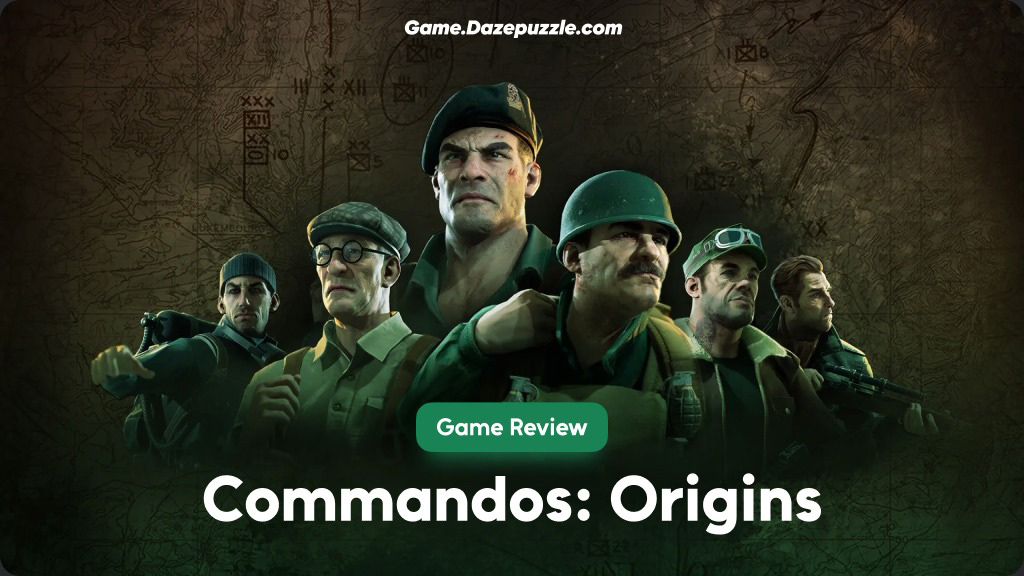The name Commandos echoes through the halls of gaming history, synonymous with punishingly brilliant real-time tactics and the satisfaction of orchestrating the perfect stealth operation. It’s a benchmark, a high-water mark for strategic thinking under pressure.
Table of Contents
Now, Commandos: Origins aims to transport us back to the very inception of this legendary squad, thrusting players into the formative missions that defined them amidst the brutal landscape of World War II. This isn’t merely revisiting old ground; it’s exploring the birth of legends, witnessing the trials that forged ordinary soldiers into an elite fighting force. Let’s meticulously dissect the components that make Commandos: Origins such an anticipated arrival on the tactical scene.
The Unseen Hand: Embracing Stealth and Strategy
Commandos: Origins plants its flag firmly in the soil of strategic stealth gameplay. This is the core identity, the fundamental principle driving the experience. Forget overwhelming force; victory here is measured in whispers, shadows, and calculated risks. Gameplay revolves around the intricate art of observation and planning. Players must dedicate themselves to analyzing enemy placements, understanding the rhythmic dance of patrol routes, and exploiting every blind spot, every environmental advantage the battlefield offers.

Think of each mission as a complex, dangerous mechanism. Guards, searchlights, alarms, objectives—they all interlock. Your role is that of the master strategist, carefully manipulating these components, creating diversions, neutralizing threats silently, and achieving your goals often without the enemy even realizing the extent of the intrusion until it’s too late.
The game demands patience, rewarding meticulous planning and precise execution far more than reflexive action. This clear focus on intelligent stealth over open confrontation is the essence of the Commandos spirit, and Origins appears deeply committed to this challenging yet immensely satisfying philosophy. It promises a cerebral experience where outsmarting the opposition is the ultimate triumph.
The Tools of the Trade: Specialized Skills and Team Synergy
The heart of any Commandos experience lies within its diverse cast of specialists, and Origins ensures this tradition continues by emphasizing the critical role of each commando’s unique abilities. While specifics may vary, the archetype is familiar and essential: a team composed of individuals each mastering a distinct, vital skill set. We anticipate seeing roles reminiscent of the classic lineup—the brute force and agility of a Green Beret, the pinpoint accuracy of a Sniper, the explosive expertise of a Sapper, the underwater prowess of a Diver, the vehicular mastery of a Driver, or the cunning deception of a Spy.
The true tactical depth emerges not from individual prowess alone but from the seamless integration of these skills. Success hinges on synergy. Imagine needing the Spy to weave through enemy lines using a disguise to disable a communication post, allowing the Sapper to plant charges on a bridge undetected while the Sniper provides overwatch from a hidden vantage point. Gameplay becomes a complex ballet of coordinated actions.
Players will constantly evaluate the strengths and weaknesses of their available team members, tailoring their approach to the specific challenges of the mission and the skills at their disposal. This requirement for intricate teamwork and creative problem-solving using a diverse toolkit promises layers of strategic depth and replayability. Understanding how to combine these unique abilities effectively is the key to unlocking victory.
Synchronized Strikes: Harnessing the Command Mode
A significant feature enhancing the tactical layer is the inclusion of a “Command Mode”. This system, drawing parallels to sophisticated planning tools seen in modern contemporaries like Desperados 3, empowers players with an unprecedented level of coordinated control. Essentially, it allows for a tactical pause, a moment to freeze the relentless flow of real-time action. During this pause, players can meticulously assign a sequence of actions to multiple commandos. Once the plan is set, a single command executes all queued actions simultaneously.
The strategic implications are profound. Complex, multi-pronged maneuvers that would be incredibly difficult, if not impossible, to coordinate manually in real-time become achievable. Picture synchronizing a guard takedown by the Green Beret with the disabling of a nearby alarm by the Sapper, while the Diver emerges from the water to neutralize a sentry—all executed in perfect unison.

This feature elevates planning from reactive improvisation to proactive orchestration. It allows players to focus on devising the most efficient and elegant solution to a tactical problem, then executing it with precision. While powerful, Command Mode will undoubtedly demand skillful application. Knowing precisely when to activate it, how to sequence actions for maximum effect, and anticipating potential complications will be crucial. It’s a tool designed to amplify strategic thinking and enable the execution of truly spectacular tactical plays.
War-Torn Worlds: Environment and Immersion
The setting is more than just a backdrop; it’s an active participant in the tactical gameplay. Commandos: Origins unfolds across vividly realized WWII theaters, with diverse locations spanning Europe and North Africa mentioned as key operational areas. The game utilizes fully 3D environments, a notable evolution offering greater depth and interactivity. Coupled with features like a rotatable camera and the ability to seamlessly enter and navigate building interiors, the tactical landscape becomes far richer.

This environmental design allows for much more dynamic and nuanced strategies. Players can leverage verticality, using rooftops for observation or sniper positions. Building interiors become complex micro-environments for close-quarters stealth or finding alternative routes. The ability to thoroughly scout sightlines and plan approaches from multiple angles is greatly enhanced.
Detailed maps promise environments filled with tactical opportunities—crucial cover, objects for creating distractions, choke points, hidden passages, and patrol routes that interact realistically with the terrain. The geographical variety should also provide distinct challenges, from navigating snow-covered villages to infiltrating desert outposts, ensuring both visual and strategic diversity throughout the game. The world itself becomes a puzzle to be solved, a landscape to be exploited.
You might also like this: Top 10 Free Steam Games in 2025
Behind the Lines: Technical Execution and Polish
Creating a complex real-time tactics game with multiple interacting systems—AI, pathfinding, physics, unique abilities—is a significant undertaking. While the strategic design appears robust, achieving technical excellence is crucial for the player experience. In a genre demanding precision and rewarding careful planning, technical glitches can be particularly disruptive. Potential areas that require meticulous polish often include unit pathfinding, ensuring commandos navigate complex terrain reliably without getting stuck or exposing themselves unintentionally.
Furthermore, the stability and reliability of save systems are paramount in games that encourage trial-and-error learning. Consistent and predictable enemy AI behavior is also vital; players need to be able to understand and anticipate enemy reactions to plan effectively. While specific challenges are part of development, ensuring these core technical aspects are smooth and dependable will be essential for Commandos: Origins to fully realize its potential. A high level of polish allows players to immerse themselves in the strategic challenge without battling frustrating technical limitations.
Promise and Potential
Commandos: Origins shows immense promise. The core tactical stealth gameplay, the clever implementation of unique character abilities, and the strategic depth offered by features like Command Mode point towards a potentially outstanding entry in the genre. It clearly respects the series’ legacy while introducing smart modernizations.

However, the technical hiccups mentioned, like bugs with navigation and saving, cannot be ignored. Assuming these are polished for the final release, the game looks set to be incredibly engaging and rewarding. It’s a tentative score based on potential, but the signs are strong.






